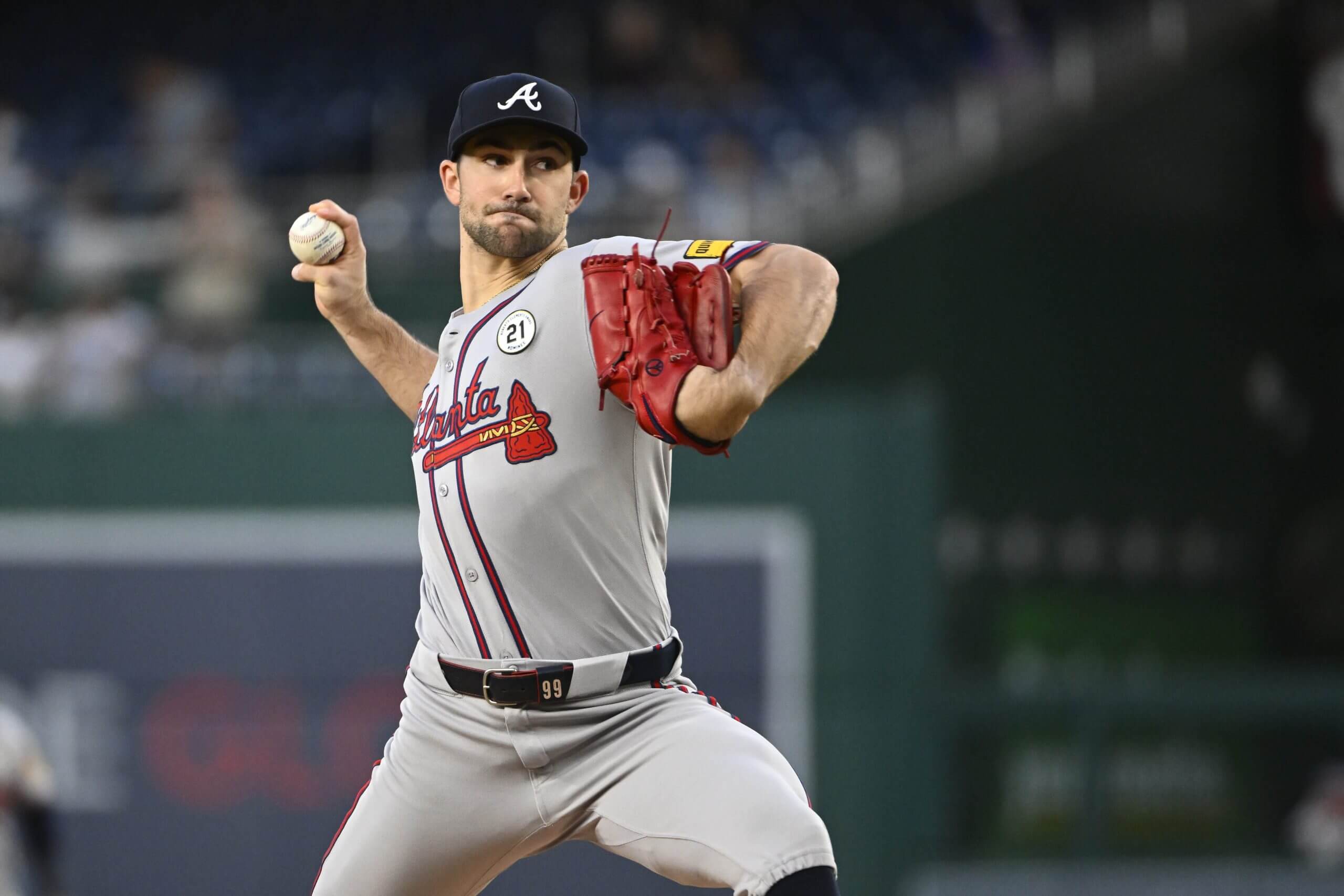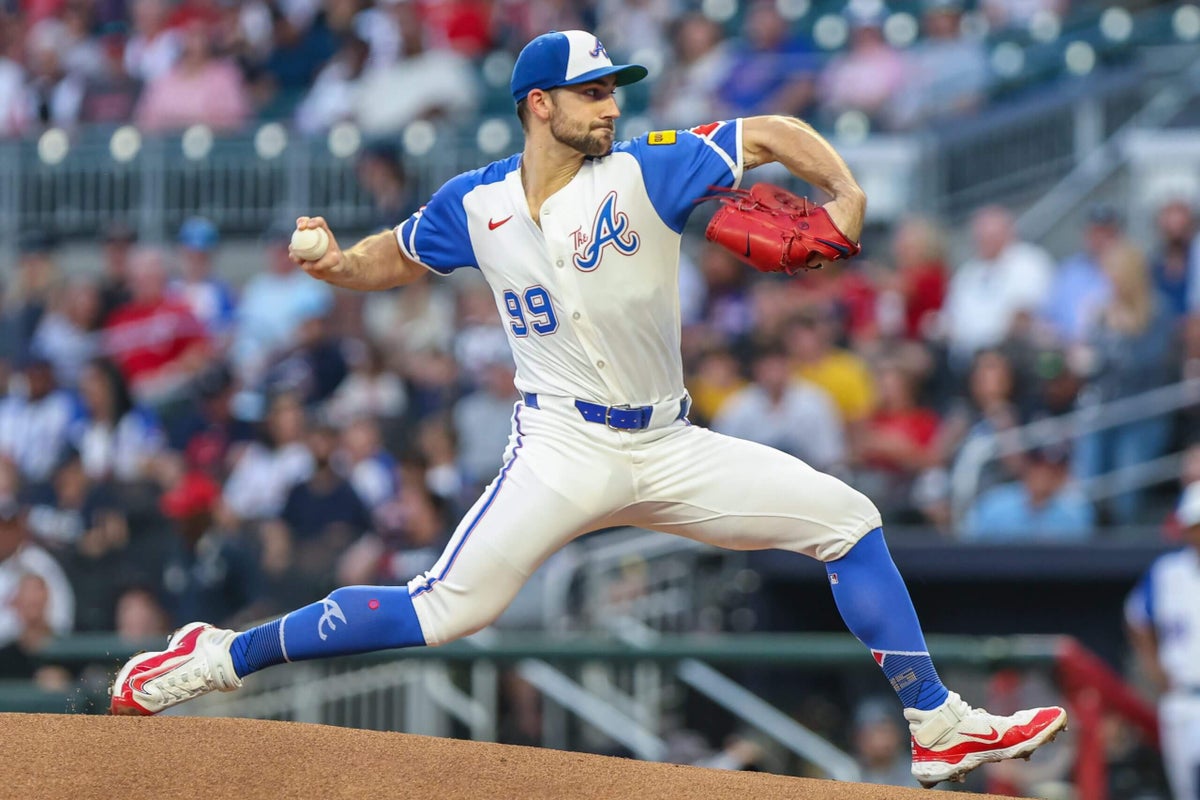ATLANTA — Even if Spencer Strider’s final start of the season wasn’t a particularly stellar outing, it didn’t detract from his progress in recent weeks, the reasons he and the Atlanta Braves are so encouraged about his outlook for 2026. There were reminders of that progress Saturday.
Strider gave up three runs in six innings of a 3-1 loss to the Pittsburgh Pirates, leaving him with a 2.50 ERA in his last six starts after the worst three-game stretch of his career in August.
“There was some regression today,” Strider said after Saturday’s loss. “Just didn’t command the curveball. Slider, commanded it, but didn’t have the right shape. I thought we executed a lot of pitches still, and everything kind of went to the area I was trying to throw it to for the most part. We were really efficient, managed bat speed pretty well for a while. Got them to swing, which was good.
“And then we were set up really well to go super deep and keep us in the game, and just couldn’t do it.”
In his first season back from his second major elbow surgery, Strider went 7-14 with a 4.45 ERA in 23 starts. It should be noted that 20 of his 62 earned runs came in those three August starts. He had a 3.33 ERA in his other 20.
And it was how he got outs early Saturday that gave further reason to believe baseball’s formerly most dominant strikeout artist has learned he can succeed without the sport’s most electric fastball. That he could be ready for bigger things in 2026, when the Braves will have Strider returning along with Chris Sale and Spencer Schwellenbach to form what should be an elite starting trio — if they can stay healthy.
Asked about his offseason goals, the analytically minded Strider said, “Got to get fitter. I need to neurologically reset my upper right side. That is something that I am focused on doing. I’ve thrown for 13 months straight, so I need to kind of let my body reset, find some symmetry and just some more ease and looseness. Analyzing how I’m moving. Looking at some range of motion stuff, and try to just take in where I’m at physically.
“And then put together a program that, based on that information, enables me to be in the best place possible.”
In a perfect first inning Saturday, Strider struck out Bryan Reynolds on three pitches for the third out. How Strider did it was notable. He struck out Reynolds without throwing a pitch as hard as 87 mph.
Strider started Reynolds with a curveball for a called strike, then got him swinging at an 86.4 mph changeup just inches off the ground and struck out Reynolds on a foul-tipped slider at the bottom of the zone.
The second out of that inning was another three-pitch strikeout, Strider getting Jared Triolo looking at a 96 mph fastball to start the at-bat, then fouling back a 96.5 mph heater before taking a curveball on the inner edge of the plate for a called third strike.
The point being, he didn’t blow away either hitter swinging at 98 mph-99 mph fastballs at the top of the strike zone, the way Strider did routinely during the 2022-23 seasons, when he led the majors in strikeouts.
After making only two starts in 2024 before internal-brace elbow surgery, Strider returned this season with a lesser fastball and a need to make adjustments that became more glaring when he endured the worst stretch in his career, going 0-3 with a 15.43 ERA in three starts from Aug. 6 to Aug. 18 while allowing 29 hits, including seven homers in 11 2/3 innings.
He has a 2.50 ERA in six starts since then, and Strider had allowed 24 hits and only two homers in 30 innings over five starts before giving up eight hits, including a homer Saturday.
“I think it’s just product of the adjustments that we set out to make a few starts ago, mixing in the other stuff,” he said after his start one week ago at the Detroit Tigers, when he pitched five scoreless innings in the finale of the Braves’ 7-0 trip, while relying heavily on secondary pitches to get outs in key situations with runners on base. “And then also trying to correct the fastball shape. I didn’t command it very well, but the shape was really good. And so when I threw it in the zone, it got me pretty favorable outcomes.
“But, yeah, obviously leaning on the off-speed a ton, something that I certainly wasn’t capable of doing in a number of ways earlier this season. So it’s a good adjustment.”

In his first season back from his second major elbow surgery, Spencer Strider went 7-14 with a 4.45 ERA in 23 starts. (Brad Mills / Imagn Images)
In 2022-23, Strider enjoyed soaring success by overpowering hitters. He challenged them to hit a fastball that averaged 98 mph in 2023 and had so much ride to it, so much explosiveness, that it appeared to rise. Induced vertical break is the technical term, and his IVB of 18-plus inches usually left hitters flailing as they tried to catch up to the high heat.
The actual vertical drop on his fastball was just 10.7 inches that season, which also ranked among MLB leaders.
This season, Strider’s fastball has averaged 95.5 mph, with 16.4 inches of IVB and 13.6 inches of actual vertical drop. Still good, but not the elite measurements from before his second elbow surgery. As the season progressed, Strider had a couple of outings when his fastball was closer to its old form.
In the meantime, he made significant improvements in his secondary pitches and added to his pitch mix, becoming more of a pitcher’s pitcher than the utterly overpowering fastball specialist he was before, when he complemented the heater with a good slider and occasional changeups.
Strider throws the slider more and now mixes in plenty of curveballs, the pitch he added after the 2023 season but barely got to break out before season-ending elbow surgery in April 2024. Sabermetric ratings say Strider’s curveball was his best pitch this season, with a far better “run value” than either his fastball or slider.
“He’s done a great job of working and kind of reinventing himself a little bit,” Braves manager Brian Snitker said. “We were just talking and (former Braves pitcher Tim Hudson) mentioned that it was 18 months (after elbow surgery) before he really started feeling like it was coming out (of his hand) like he remembered it. I think when (Strider) gets in the offseason and gets a full-volume spring training, you’re gonna see really good things.”
Strider’s fastball yielded a .287 opponents’ average and .471 opponents’ slugging percentage this season before Saturday, compared with .256/.431 in 2023 and a .201 average and puny .295 slugging percentage in 2022.
But opponents had hit just .107 with a .286 slugging percentage against his curveball this season.
The Braves believe that when he regains more fastball velocity, the adjustments Strider has made and improvements to secondary pitches will help him for years to come, so that he does not rely on the fastball as much.
The changes he’s made in recent weeks have him feeling much better about his first season back from his second surgery. He’ll enter the offseason healthy and with a new understanding of what he can do with secondary pitches and some “reshaping” he’s done with his fastball.
“That’s something that we talked about, was let’s just look at where we are objectively,” Strider said after the game at Detroit. “The goal was to try to set ourselves up to be as good as we can go into the postseason, but when that’s not the reality, then what is the goal going to be? So, trying to incorporate the full mix, be comfortable pitching with all four of my pitches, and pitching with runners on base, controlling the running game, those kinds of things.
“Just skills that will be necessary to succeed all the time, but also in a big-game environment in the postseason. That’s important.”
He added, “Being honest, I probably should have forced myself to make those adjustments and add those skills to my game a lot earlier than I did. And having waited this long cost us games. It cost me performance. But it’s very difficult to make those adjustments. Sometimes you need the game to tell you when to learn.”
(Top photo: Jordan Godfree / Imagn Images)

